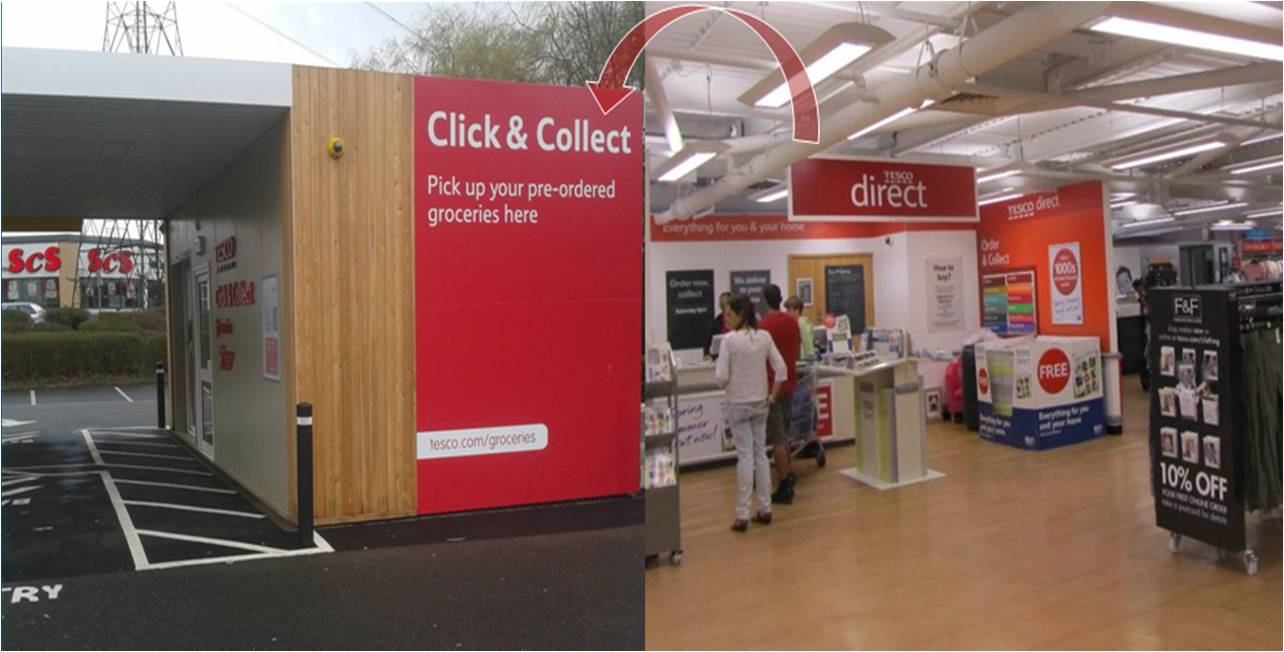Franchising, retail, business

23/09/2014
The popularity of click-and-collect services amongst consumers has come as no surprise to retailers. Over the past six months, the e-commerce space has witnessed some of the biggest names in retail jumping on the click-and-collect bandwagon, aiming to make the shopping experience even more convenient for consumers. Technology has also played its part in responding to the ever-increasing demands of consumers, with retailers offering more solutions and innovations to cater to these requests than the industry has ever seen before.
Recently we’ve witnessed the rise of collection-point services based in railway stations. Network Rail and Travelex joined forces to create Doodle, a click-and-collect venture that will allow Amazon, ASOS and New Look customers to pick up parcels from London tube station ticket offices. Supermarket giants Tesco and Waitrose have also announced plans to open click-and-collect services in London Underground stations. Simultaneously, Argos has partnered with e-commerce marketplace eBay, enabling shoppers to pick up goods from over 650 Argos stores nationwide. As these marketplaces connect with customers in new ways and the fulfilment infrastructure becomes more sophisticated, we’ll continue to see convenience and flexibility for customers at the forefront, driving innovation across the sector.
With these constant advances in fulfilment infrastructure and delivery methods, it will come as no surprise that retailers might be feeling some pressure to keep up. Many of the larger retailers are leading the way, but what does this mean for small and mid-size retailers?
With one in four shoppers deterred by inconvenient delivery times, small- to medium-size businesses should aim to offer customers more flexible delivery options at the checkout stage. The extension of the eBay and Argos click-and-collect partnership should help open up this delivery option to retailers of all sizes. eBay are anticipating that by the end of 2014, around 65,000 eBay sellers will offer items for collection at Argos. They estimate that number to rise to 80,000 in 2015, with millions of items for sale. Customers will notice more listings becoming available for collection from more Argos stores starting in the late summer and continuing throughout the rest of the year.
It is true that more and more consumers have flexible and mobile work-life schedules. They don’t want to take a day off to wait at home for a parcel or receive deliveries at work. The click-and-collect service is largely about giving consumers control and the choice to pick up their parcels when and where they wish. However, this model of delivery is successful for more reasons than just convenience; it’s the combining of the digital and physical shopping experiences that has captured the imaginations of both consumers and retailers alike.
Whilst some retailers may not be able to deploy click-and-collect services immediately, it is evident that retailers will be doing themselves an extreme disservice by relying solely on one delivery method. It’s important to ensure that in any planning process, retailers are assessing various fulfilment options and attempting to blend the digital and physical shopping experiences as much as possible.
Retailers need to understand that every shopping experience is different and that consumers have varying requirements. Being flexible will only help customers to incorporate their shopping into their daily lives, especially whilst on the go. Any business that understands this will succeed in the competitive retail landscape in the years to come.
For retailers looking to enhance their delivery strategy, here are 5 quick tips to help you stand out from the competition:
Be up front: Let customers know about any delivery charges early on in the purchase path. Don’t be tempted to add on hefty charges at the last minute, as this will alienate customers and is frowned upon by marketplaces.
Be flexible: Try to offer different shipping options that will cater to a wider range of consumers. Some customers might be willing to wait days for cheaper delivery, while others are happy to pay extra for an expedited service.
Manage expectations: Returns are a fact of life in retail, although how your business handles them can have a dramatic effect on your bottom-line. Implement a returns-management strategy that ensures that consumers are able to easily return products, and make sure you communicate this to customers.
Understand your product: This may sound basic, but by understanding the delivery needs of your product, you can match the product to the most appropriate delivery method. For example, smaller, lower-value products might fit through a letterbox and therefore might not require a courier to deliver.
Communicate: Have a comprehensive customer service offering that deals with queries and complaints quickly and easily.
By:http://www.retailgazette.co.uk/articles/40311-click-and-collect-what-does-this-trend-mean-for-the-retail-industry?dm_i=26NX,2TSPW,FXSGIV,A9JDF,1